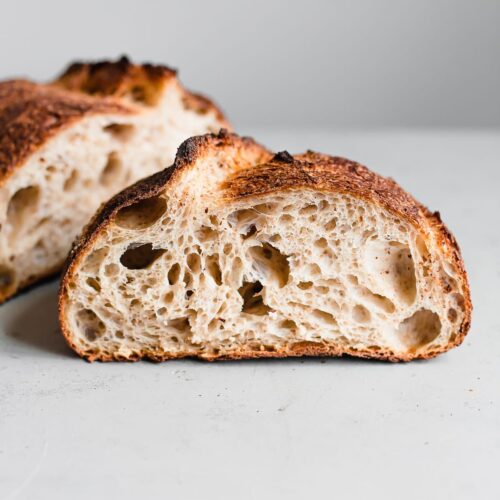
- How do you make cheese bread with sourdough starter how to#
- How do you make cheese bread with sourdough starter full#
It should have risen between 50% and 100%. These are clear signs that the dough is ready to be shaped for the first time.
How do you make cheese bread with sourdough starter full#
Rising - When is it ready for shaping? At the end of the bulk fermentation, the dough should be full of bubbles, lively, airy, and wobble like a jelly-fish when you shake the container. In the end, it should feel smooth and soft but still a little tacky to the touch, and no lumps of flour remain. The longer you knead the dough, the smoother it will be. You will find that the dough transforms as you knead. As soon as the water and the protein of the flour combine, gluten forms. By kneading, you push the flour into the water so it can absorb it. Kneading - How long should you knead the bread? Kneading is important to develop gluten and to build and strengthen the gluten strands. You see, it's a little flat and the crumb is full of large bubbles. The picture below shows a loaf that I baked after storing the dough in the refrigerator for 4 days. Please note that the bread from the same batch changes in appearance and taste from day to day (the longer it is stored, the more acidic/sour it becomes). I usually keep one dough at room temperature to bake the same day or the next morning, and the others I keep in the refrigerator. If you like this idea, double, triple, or quadruple the recipe and after the 4 sets of stretching and folding, divide the dough and keep the individual dough portions in individual containers. I usually make 3-4 servings at a time, store them in the refrigerator, and bake them within 3-4 days. Make-Ahead Tip: This recipe makes a small loaf that weighs 472g unbaked because we are a small family (my husband and I) and we love having freshly baked bread every day. If it isn't wobbly and bubbly when you take it out of the refrigerator, let it sit at room temperature until it has fully developed. Take it out of the refrigerator 1 hour before continuing with the recipe, when the dough is already fully developed. It will still rise and develop in the refrigerator but at a much slower rate. In this case, after about 2-4 hours at room temperature and as soon as small bubbles form on the sides of the container in which the dough is stored, place in the refrigerator and store there for up to 5 days. You can also let the dough rise in the refrigerator for a few days to suit your schedule. I recommend storing it at 68°-75☏ (20°-24☌) so that the dough fully develops in 6-12 hours. The cooler the temperature, the longer it will take, and the warmer the temperature, the shorter it will take. How long the fermentation takes depends on the dough and ambient temperature and can range from as little as 4 hours to 24 hours at room temperature. This is a medium-wet dough for basic white bread, with a hydration level of 67%. Water – The wild yeast cultures in sourdough bread dough are sensitive to chlorine, so it’s best to use bottled water or filtered tap water. Low-gluten flour (all-purpose) will work too, but doesn’t give you the same results. Bread flour is preferred when baking bread because it makes an incredibly airy and chewy crumb and you have more flexibility with longer and cold rises in the refrigerator. The higher the protein content, the stronger the gluten. Bread flour – I mainly use organic white bread flour with a protein content of 13.4%. The 6 stages of successful bread baking. 
It is also possible that my outlined schedule does not work for you. The activity and growth of your sourdough bread depend on many different factors and you need to figure out what works for you in your environment with the flour and water you are using. So there is no such thing as a one-size-fits-all approach. Every sourdough starter and every bread behaves differently. I will do my best to guide you through the process so that you can successfully bake your own bread. Note: Please understand that I can only give an orientation of what I have learned from experience and tests. By the way, you could also try my sourdough sandwich bread! It's is very beginner-friendly and perfect for a busy schedule as you only have to let the bread rise once. This recipe provides the instructions for making a levain (also called a leaven - an active sourdough starter). I will walk you through the process and give you tips, tricks, step-by-step photos, and a tutorial video so that you can successfully bake your own bread. It is not as complicated as you might think to make beautiful and tasty bread.
How do you make cheese bread with sourdough starter how to#
Learn how to make sourdough bread with sourdough starter from scratch.





 0 kommentar(er)
0 kommentar(er)
